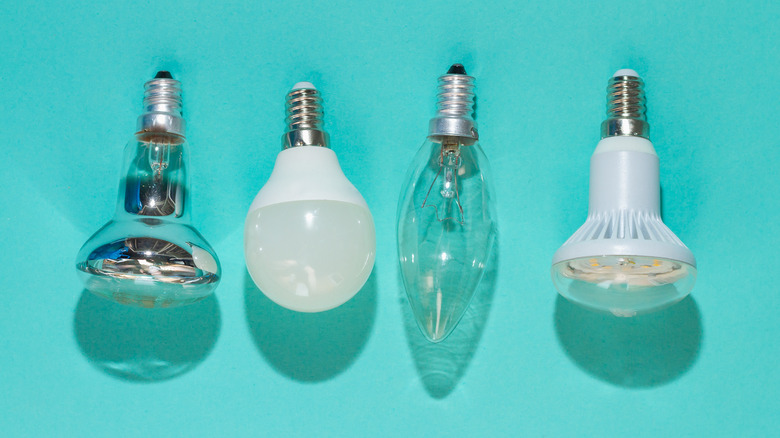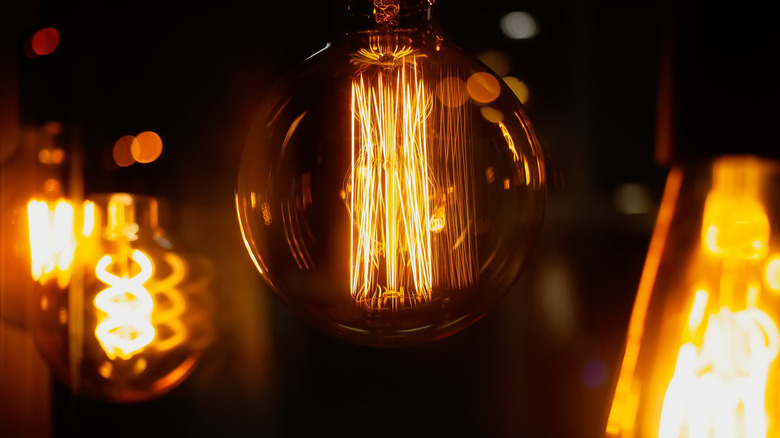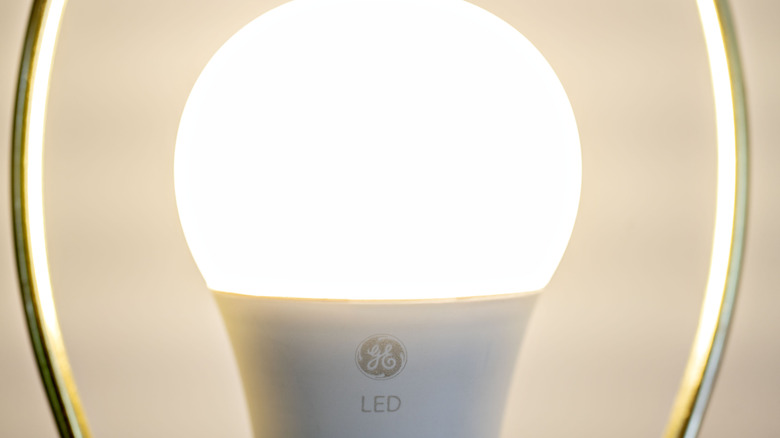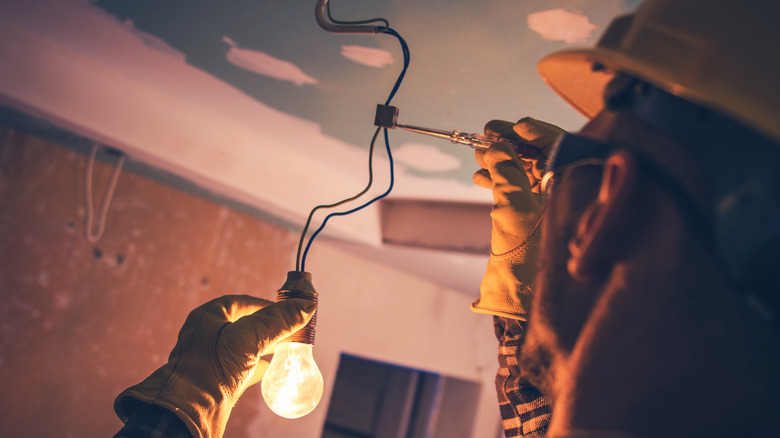Halogen Lamps VS. LED Light Bulbs: What's The Difference?
When designing a home, many elements come into mind. What is your design and color theme? How will certain furniture pieces fit in your space? What will be your contrasting features? By the end of the design, it is time to work on the smaller details. After choosing the paint colors for your home, light bulbs have the ability to drastically make them look different — and make you regret your entire project, too, according to Houselogic. Two commonly used light bulbs are halogen lamps and LED light bulbs. Although they have a similar purpose, both are different in costs, lifespan, and even heat emissions.
Homeowners should carefully review the differences as they contemplate the style of their homes. Changing burnt-out bulbs is no longer a simple endeavor, but becoming an expert on the differences between these two bulbs will hopefully make the process easier as you strive to meet certain expectations on the style of your home.
What are the differences in cost?
LED light bulbs are typically three to four times more expensive than halogen lamps, according to Vispronet. Although halogen lamps have a lower price, LEDs tend to meet consumer needs by lasting longer than the others. It's important to note that LEDs last for about 55,000 hours while halogen lamps last a little over 1,000 hours before eventually burning out. This is important because although the prices are drastically different, consumers will spend less time buying replacements with LEDs when compared to halogen lamps.
If the price of LEDs is something that scares you off, Energy Saver says that the price of LEDs has dropped down like crazy ever since they were first introduced into our homes. It is predicted that the price will continue to drop as more products and produced. However, for those who have drastically high electricity bills, halogen lamps can help by saving over $10 for each light in the house over the course of a year (via How Stuff Works).
What are the differences in heat emissions?
Some light bulbs tend to produce a lot of heat, which then, in turn, can be quite annoying in the summer when you're trying to cool down. Unfortunately, they are also mass producers of carbon dioxide, according to Environmental Defense Fund. According to Vispronet, halogen lamps convert almost 100% of their energy into heat.
This also means that the difficulty to replace them is higher as you do not want to burn your hands — speaking of burning — lights capable of producing a lot of heat are also vulnerable to starting fires. So if you do have halogen lamps, it is important to keep them away from fire-prone objects. Just a few years ago, the European Union banned the use of halogen lamps as they strive to become more eco-friendly (via C+W Energy Solutions). However, LEDs only produce about 15% of their energy as heat, making them seemingly safer for your home and the environment.
What are the differences in lifespan?
The lifespan between LEDs and halogen lamps is drastically different. When looking at the numbers, a halogen lamp's lifespan is less than half of an LED, according to Vispronet. This is because of how the system within an LED works, says Boundery.
Other light bulbs allow their energy to release as heat instead of being used to produce light. LEDs, on the other hand, use most of their energy to produce light instead of allowing their potential energy to be wasted. Although halogen lamps have a shorter lifespan than LEDs, they still outperform others, such as incandescent bulbs (a light bulb that produces the most heat), and keep a consistently bright light until eventually burning out, according to The LightBulb Company. So when deciding between the two, it'd be wise to calculate how often your lights are on to decide what is best for your home.
What are the differences in color?
As said before, the color of your light can determine the overall look of your home. According to Lighting Info, halogen lamps typically give off a consistent yellowish tone due to their higher temperature of over 2,000 degrees Kelvins. However, the colors of LEDs range from a soft, warm white, a neutral pure white, and a cool bluish light. Yellow halogen lamps are able to add warmth to a dark room that is typically not exposed to natural light by adding a yellow or amber hue (via Lights.com).
In that same room, LEDs are capable of producing a natural-looking light as if there were a window in the room and are capable of making bright colors more lively and cooler colors appear more muted. So depending on the look that you're going for, it is important to understand the impact of these lights on your design. According to Julie Blanner, interior designers typically use light bulbs that produce a soft white color to ensure that various needs are met.
What are the differences in climate friendliness?
Surprisingly, both bulbs are efficient in climate friendliness. However, LEDs are considered to be the most eco-friendly due to multiple factors, as LEDwatcher states. LEDs consume about 10 watts of electricity, which is about 53% less energy than most other lighting systems. As said before, LEDs don't require replacements for a rather long time, which means that fewer materials are being used to produce and ship them out.
Although the halogen lamp cannot compare in efficiency with LEDs, they are still evolving to meet the standards of creating a climate-friendly world. New generations of halogen lamps have a special infrared coating that reduces waste and heat, which can enhance their ability to be eco-friendly by about over 25%.
Installation difficulty
These light bulbs have many differences — and after reviewing them all — you may be thinking about making a switch. Good news! Whether you're someone switching from halogen lamps to LEDs or LEDs to halogen lamps, the transition from either is simple, according to LEDHUT.
If you are looking to replace your halogen lamp with a LED bulb, it's as simple as unscrewing one to replace the other. However, it may be necessary to make the switch with an additional driver (a device to maintain a certain voltage) if you are working with MR16, MR11, or G4 spotlight bulbs. The same goes with replacing LEDs with a halogen lamp; no matter the fitting, they are capable of making the transition.






